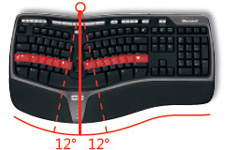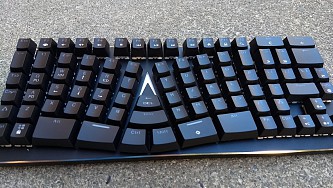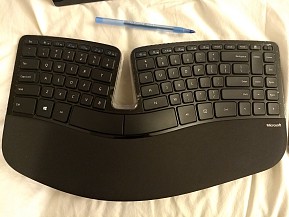Keyboard Tilt, Tenting, Orientation
Keyboard Tilt, Tenting, Orientation
keyboard ergonomics: angles of ergonomic keyboard.
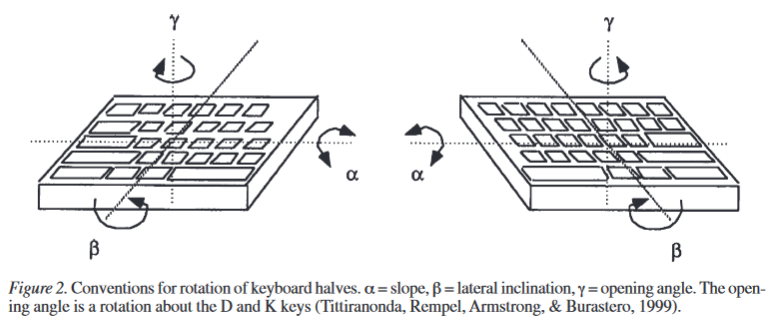
- α is called tilt.
- β is called tenting.
- γ is called orientation.
Tilt
- Positive Tilt (tilt up): traditional keyboard has legs at the back, that make them positive tilt, about 10 degrees. This causes your wrists to bend up.
- Negative Tilt (tilt down): some ergonomic keyboards have legs in front (near the space bar area), called front riser. These create a “negative tilt”, about 20 degrees.
Negative Tilt is more ergonomic, because it prevents wrists bending up.
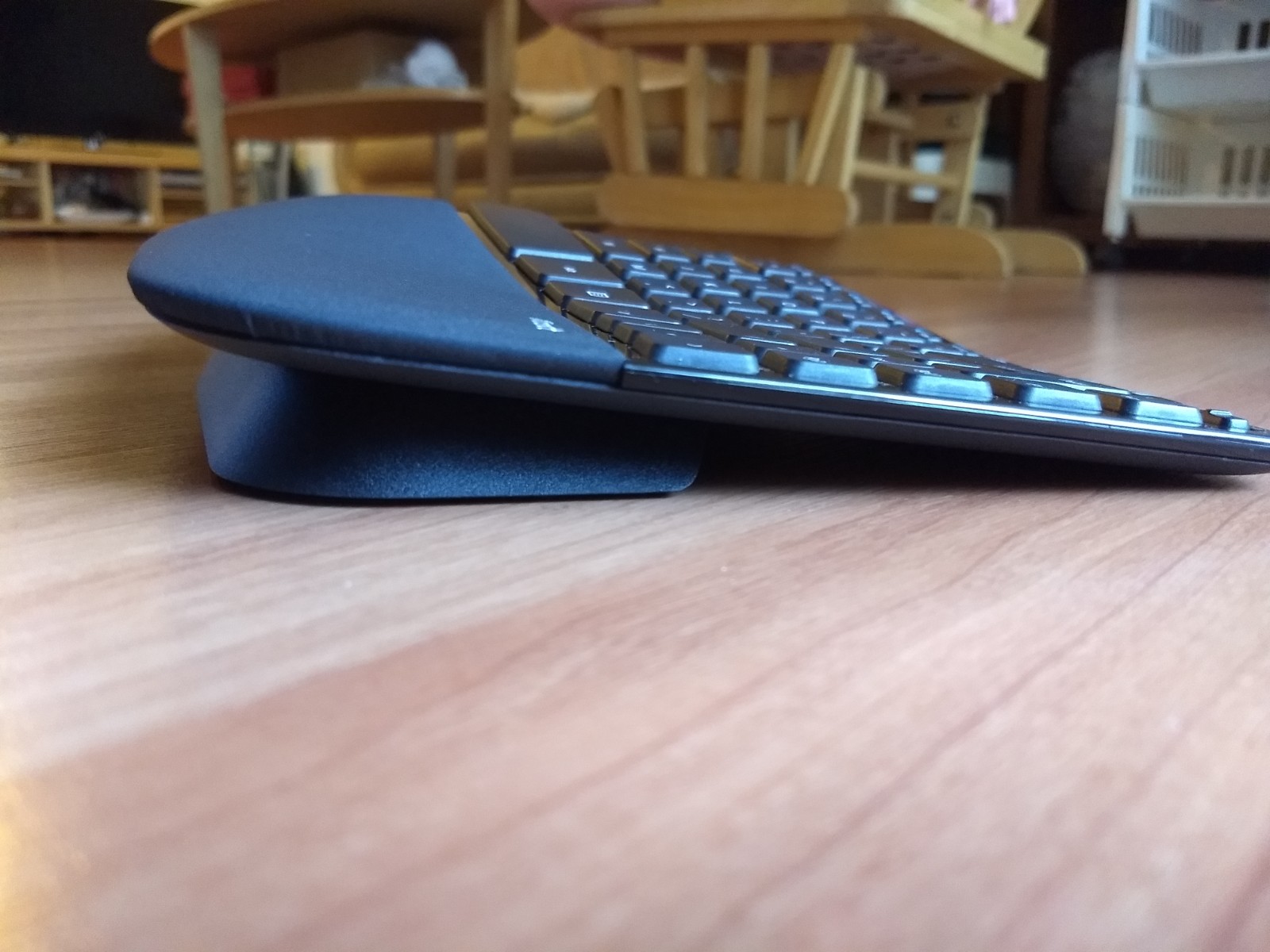
Tenting
Tenting is raising the middle of the keyboard higher. This is good for preventing hand pronation problem.
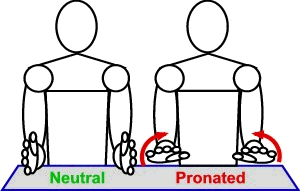
Split 2-piece ergo keyboards use legs or stand to allow tenting.
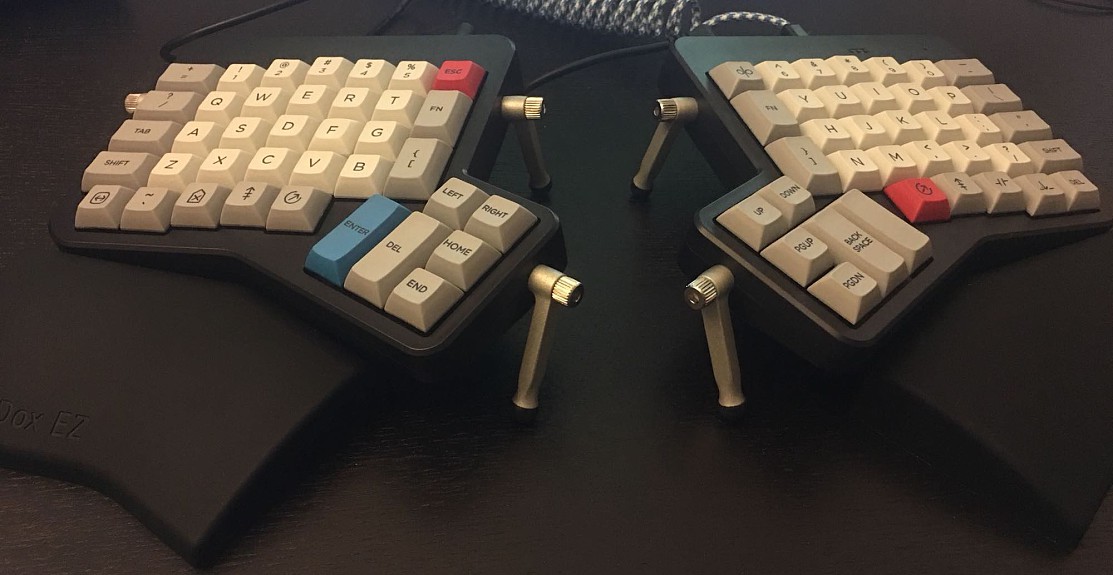
One-piece ergo keyboards may have tenting builtin.
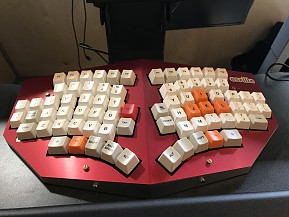
Orientation
Orientation is about how you have to bend you wrist to the left or right.
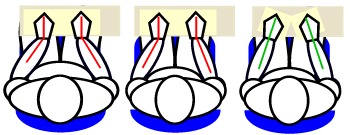
Inverted V orientation is achieved by having two separate pieces, one for each hand. Or, it is most common in one-piece ergo keyboards, having a inverted V shape. Typically 10 to 20 degrees.
